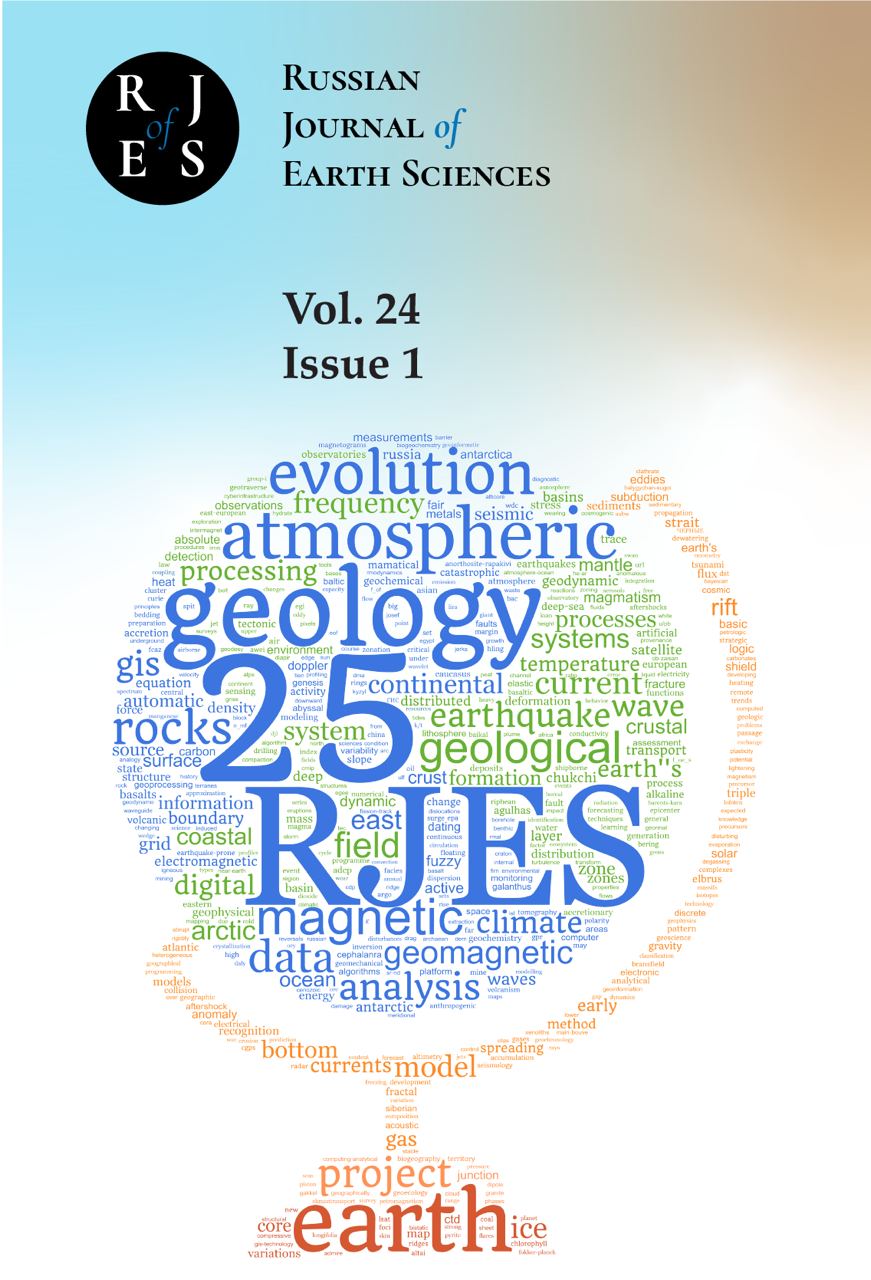Murmansk Marine Biological Institute of the Russian Academy of Sciences
Rostov-on-Don, Rostov-on-Don, Russian Federation
Rostov-on-Don, Rostov-on-Don, Russian Federation
UDC 55
UDC 550.34
UDC 550.383
CSCSTI 37.01
CSCSTI 37.15
CSCSTI 37.25
CSCSTI 37.31
CSCSTI 38.01
CSCSTI 36.00
CSCSTI 37.00
CSCSTI 38.00
CSCSTI 39.00
CSCSTI 52.00
Russian Classification of Professions by Education 05.00.00
Russian Library and Bibliographic Classification 26
Russian Trade and Bibliographic Classification 63
BISAC SCI SCIENCE
The paper presents new results of an investigations of the cyclic currents of the Azov Sea. Using offshore and onshore surveys at buoy ADCP-stations the separation of the characteristic features of water transport in different areas of the Taganrog Bay was shown. Expeditionary observations showed that despite of the drift-gradient nature, the resulting current has the direction of the Don runoff current. Direct coastal measurements showed that the runoff current significantly predominates on the spits of the southern coast of Taganrog Bay. Seiche pulsations manifest themselves as a two to three-hour slowdown of the main flow at diurnal intervals. The division of the areas of the Taganrog Bay according to the trajectories of water movement is noticeable. The eastern part has a predominantly river regime of water circulation. In the central part the meridional component of seiche currents plays an important role in water mixing. The marine regime of water mixing prevails in the western part of the Taganrog bay. Test calculations show that the classical tidal analysis program T_TIDE is applicable with caution for the Sea of Azov. The visually observed diurnal and semi-diurnal sea level rises represent a superposition of waves of different natures. The results of the work correspond to the known patterns of energy exchange between the atmosphere and the ocean. Even weak winds lead to the development of wave processes at eigen frequencies close to tidal ones. Increasing winds contribute to the intensification of wave fluctuations and significant transfer of water during strong surges.
the Azov Sea, the Taganrog Bay, tideless basins, seiches, positive and negative water setups, ADCP-measurements, lithodynamics, sea currents
1. Gershanovich, D. E., N. P. Goptarev, B. M. Zatuchnaya, and A. I. Simonov (Eds.) (1991), Hydrometeorology and hydrochemistry of the seas of the USSR. Volume V. Sea of Azov, Gidrometeoizdat, Saint Petersburg (in Russian).
2. Ivanov, V. A., N. I. Palshin, and Y. V. Manilyuk (2019), Seiches in Petrozavodsk Bay, Lake Onega, Water Resources, 46(5), 709-717, https://doi.org/10.1134/S0097807819050117 , EDN: https://elibrary.ru/URYYEX.
3. Korzhenovskaia, A. I., I. P. Medvedev, and V. S. Arkhipkin (2022), Tidal Sea Level Oscillations in the Sea of Azov, Oceanology, 62(5), 585-596, https://doi.org/10.1134/s0001437022050095 , EDN: https://elibrary.ru/NOIVBT.
4. Kurchatov, I. V. (1925), Seiches in the Black and Azov Seas, pp. 149-158 (in Russian).
5. Matishov, G. G., and K. S. Grigorenko (2017), Causes of salinization of the Gulf of Taganrog, Doklady Earth Sciences, 477(1), 1311-1315, https://doi.org/10.1134/S1028334X17110034 , EDN: https://elibrary.ru/XXKUPJ.
6. Matishov, G. G., and K. S. Grigorenko (2023), Seiche Currents in the Sea of Azov Based on Field Observations, Oceanology, 63(1), 27-34, https://doi.org/10.1134/S0001437023010095 (in Russian).
7. Matishov, G. G., and Y. I. Inzhebeikin (2009), Numerical study of the Azov Sea level seiche oscillations, Oceanology, 49(4), 445-452, https://doi.org/10.1134/S0001437009040018 , EDN: https://elibrary.ru/MWRZDZ.
8. Matishov, G. G., V. V. Polshin, V. V. Titov, K. S. Grigorenko, K. S. Sushko, and S. A. Misirov (2022), New data on the structure of the Beglitskaya spit, Science in the South of Russia, (3), 13-20, https://doi.org/10.7868/S25000640220302.
9. Pawlowicz, R., B. Beardsley, and S. Lentz (2002), Classical tidal harmonic analysis including error estimates in MATLAB using T_TIDE, Computers & Geosciences, 28(8), 929-937, https://doi.org/10.1016/S0098-3004(02)00013-4.
10. Zhukov, L. A. (1976), General oceanology, Gidrometeoizdat, Leningrad (in Russian).















